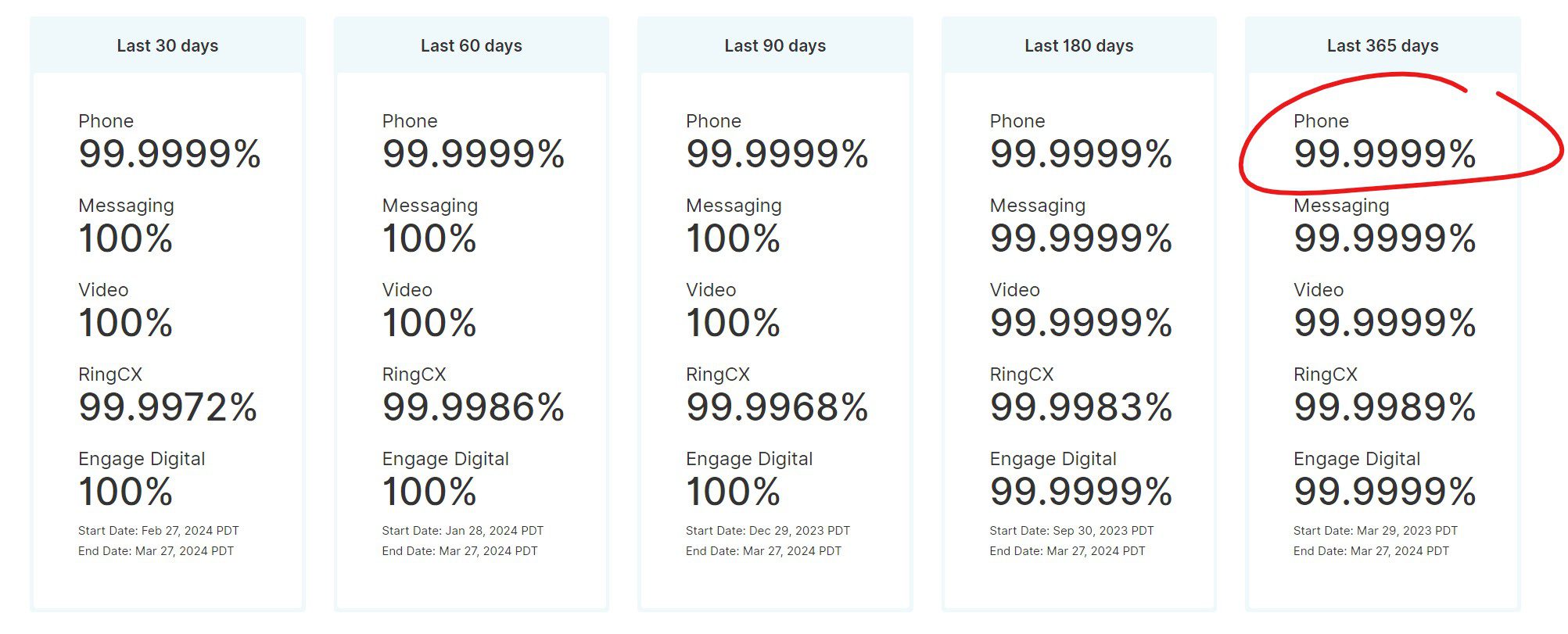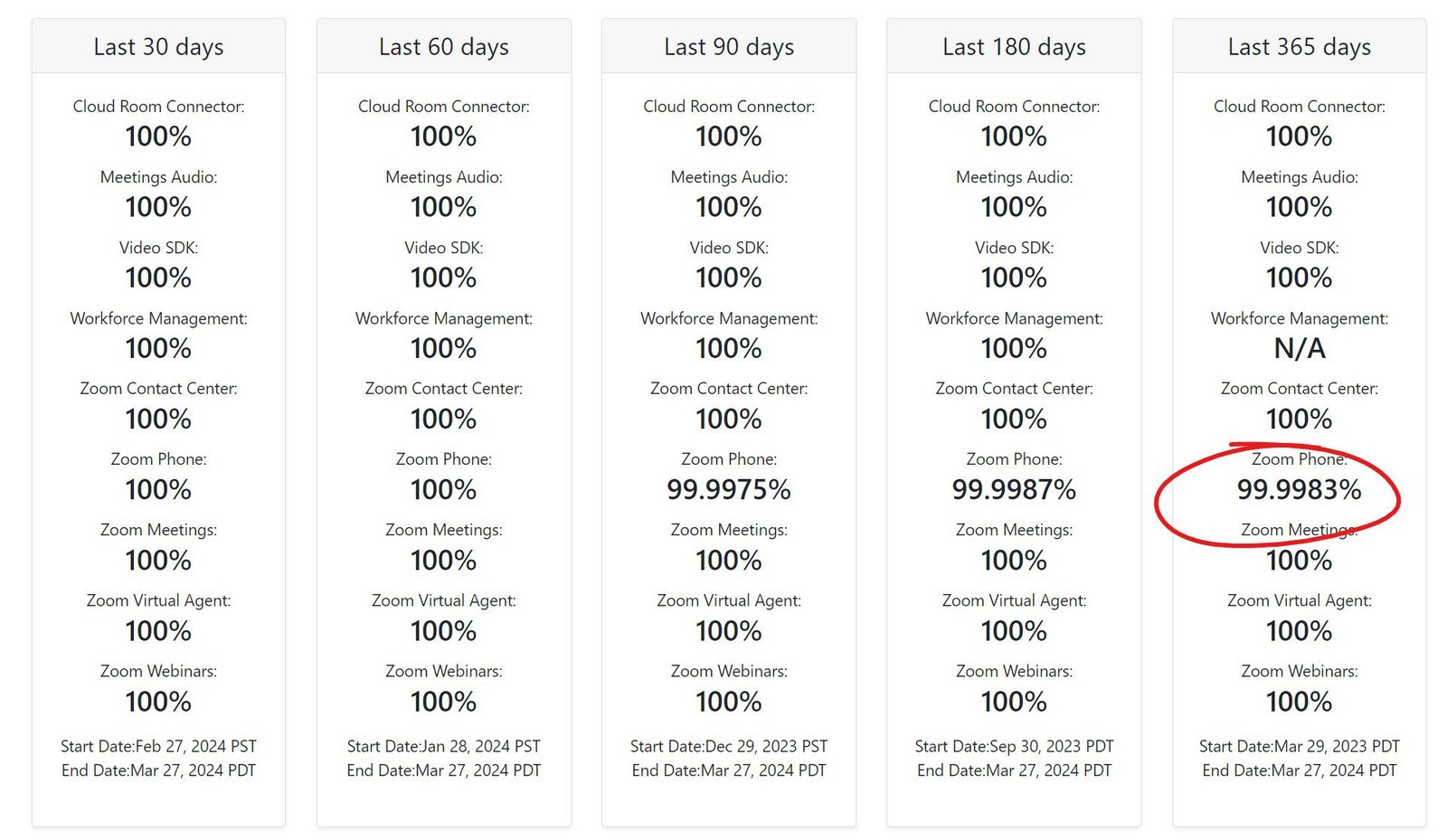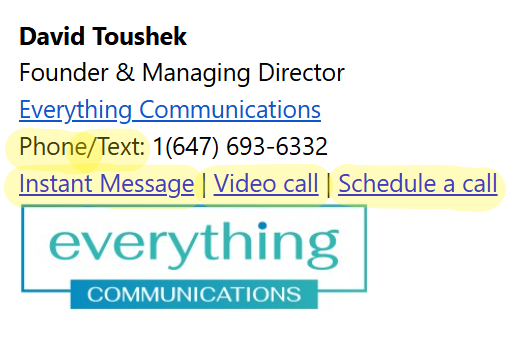In the wake of Microsoft’s significant announcement regarding a Service Level Agreement (SLA) of 99.999% uptime for Teams Phone, it’s crucial to unpack what this truly means for your businesses.
At Enterprise Connect 2024, Microsoft made a big splash about their upcoming Uptime SLA of 99.999% starting April 1st.
First and foremost, let’s address a common misconception: SLA is not uptime. While SLA represents the commitment a service provider makes to its customers regarding the level of service they can expect, uptime specifically refers to the amount of time a service is available and operational. While a high SLA often correlates with high uptime, they are distinct concepts that shouldn’t be conflated.
While it’s commendable that Microsoft appears to finally be prioritizing the reliability of their service by enhancing the SLA, it’s important not to mistake this for some sort of incredible breakthrough in performance and reliability.
The jump from 99.9% (quite poor) to 99.999% (quite normal amongst the industry leaders like Ring Central, Zoom, Webex Calling, 8×8), is simply marking that Microsoft is trying really hard to prioritize the things that matter and catch up to their competition.
Just like when they announced Teams had been rebuilt from the ground up, but only the front end client software had been (not the underlying infrastructure and technology), it’s crucial to remain vigilant and not fall into the trap of accepting false equivalencies.
Companies often tout SLA improvements as indicative of superior performance, but it’s imperative to look beyond the numbers and focus on what truly matters: actual uptime.
This is where analysts and tech brokers play a vital role. They help cut through the noise, sift through the BS, and identify what genuinely impacts your business. In the case of Microsoft’s Teams Phone announcement, while the enhanced SLA is a positive development, the ultimate measure of reliability lies in the actual uptime experienced by users. And while Microsoft doesn’t publish their actual uptime stats, two of their biggest competitors do.
For instance, while RingCentral’s SLA might also be 99.999%, their publicly available ACTUAL uptime over the last 365 days is an impressive 99.9999%.

And while Zoom’s “Uptime SLA”, may also be 99.999% their publicly available ACTUAL uptime for the last 365 days is 99.9983% (which from my experience is significantly lower than their norm).

Unfortunately Webex, 8×8, Dialpad and Microsoft don’t publish their actual uptime stats as they all seem to prefer we focus on their SLAs and “commitments to reliability” of service rather than actual reliability of service.
Conclusion
While Microsoft’s commitment to improving the SLA for Teams Phone is surely welcome news–it is particularly significant for IT leaders who, constrained by time budget and priorities, rushed to implement it without involving an advisor and without conducting a proper evaluation.
This rush risked overlooking essential functionality required for optimal performance and effective Work From Anywhere (WFA), an issue that has come back to bite with only 27% of workers believing they have the tools required to be successful at work.
And with only 25% of workers feeling confident their companies will choose the right technology to meet their needs, lets make sure we’re not get carried away by the hype but rather let’s prioritize what really matters which is ensuring we’re getting the best technology so that our people are truly enabled to do their best work in creating happy customers.
***********
How A Tech Broker Can Help
A tech broker is your trusted partner who works on your behalf to help you create the happiest employees and customers.
A partner who can not only recommend the right technology, but provide the crucial support and enablement that are often missing from the equation. Remembering that having technology is not the answer, but that maximizing and optimizing the use of technology is what allows businesses to enhance both employee and customer satisfaction swiftly.
Read the top 10 reasons you should consider using a tech broker.
So go ahead and give us a try. You’ve got nothing to lose and everything to gain!





